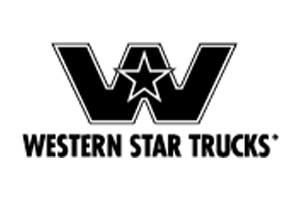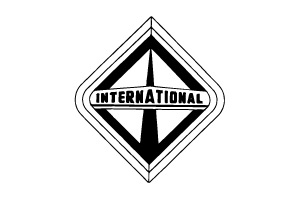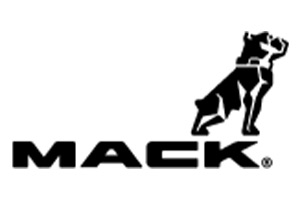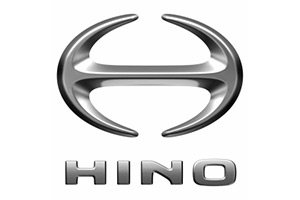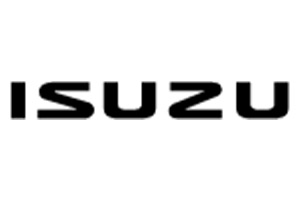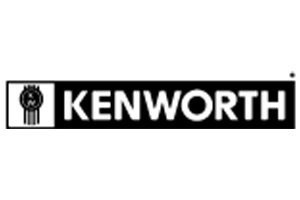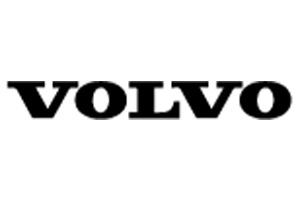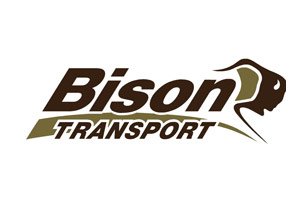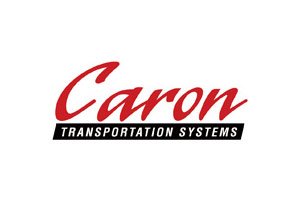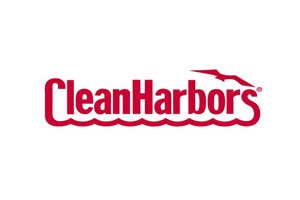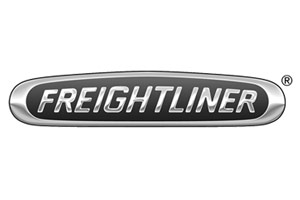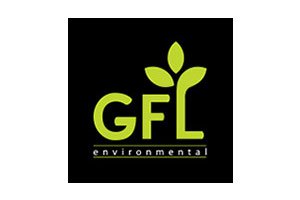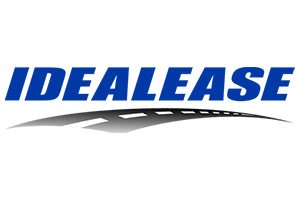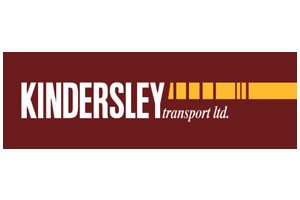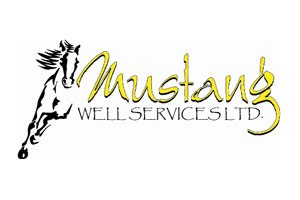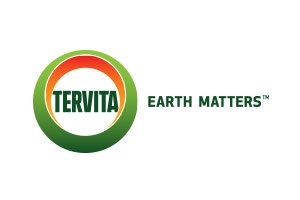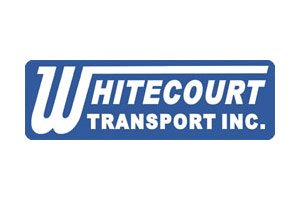Key Takeaways
-
No CVIP facilities, no safety and compliance for commercial vehicles. Since 1988, they have provided specialized inspection and certification services in accordance with Alberta’s Occupational Health and Safety regulations.
-
With regular CVIP inspections, you can keep the roads safe, fulfill legal requirements, and avoid expensive accidents or fines that may occur due to neglect.
-
Under Alberta’s CVIP regulations, facilities such as Redwoods must meet and continue to uphold stringent licensing criteria in order to operate legally.
-
When choosing a CVIP facility, look for their certification, qualified technicians and accurate inspections, and flexible scheduling to find trustworthy service.
-
Get your paperwork in order, and repair any obvious defects to get ready for your CVIP inspection. Maintaining a clean vehicle will further increase your odds of passing.
-
Regular CVIP inspections improve the performance and safety of vehicles. They save you money by helping identify issues sooner and reducing your insurance premiums.

A CVIP facility in Alberta provides CVIP licensed inspection services StARK and they ensure that vehicle introduction to Alberta is tested and approved for their provincial safety standards. These facilities are federally sanctioned to provide required safety and compliance inspections for commercial vehicles, including trucks, buses, and trailers.
Routine inspections are key in catching problems before they become safety hazards and ensuring their work meets Alberta Transportation standards. Especially in places like CVIP facilities in Alberta, certified technicians conduct a detailed inspection list that includes the brakes, suspension, steering, and tires.
A robust inspection process is crucial for public safety and ensuring that these vehicles remain legally on the road. Own one vehicle or operate an entire fleet? Having an accessible CVIP facility near you protects your fleet of vehicles and keeps them in a safe, roadworthy condition!
Being familiar with the process will ensure you don’t end up on the wrong side of provincial legislation.
What is a CVIP Facility?
A CVIP (Commercial Vehicle Inspection Program) facility plays a key role in maintaining safety and compliance for commercial vehicles across Alberta. Facilities are certified by the Government of Alberta. They are empowered to carry out inspections that make sure every truck, trailer, and bus on Alberta’s roads is upheld to the province’s high safety standards.
By ensuring the safety of drivers and passengers through this standardized inspection process, we’re making roads safer for all users.
CVIP facilities are personally liable. Licensed inspection facilities have a great deal of responsibility. The Vehicle Inspection Regulation mandates that only certified technicians working in approved CVIP facilities can perform these inspections.
Each facility is required to comply with very specific requirements stated in the Facility Operating Manual (FOM). These specifications include the equipment, facility, and operational requirements. For instance, prior to being awarded a license, a facility must successfully undergo a pre-licensing verification with the intention of verifying compliance with these prescribed rules.
This promotes depth and uniformity across inspections. The services you receive at a CVIP facility go far beyond basic checks. These facilities perform rigorous detailed inspections and provide certifications to certify the road worthiness of any vehicle.
Understandably, only 10 percent of commercial vehicles tested under the CVIP program do not meet safety standards. This serves to illustrate just how effective these inspections truly are. Indeed, licensing costs – like the $250 licensing fee – further entrench a system that prioritizes rigour and punishment over accessibility and flexibility.
The state’s regulatory framework that governs CVIP facilities is complicated. US jurisdictions—Alberta requires real email addresses and credit cards in order to issue licenses. This policy imposes strict compliance to the FOM with the goal of having the best operating facilities and further solidifying faith in the system and its results.
Why CVIP Inspections are Important
Consistent CVIP (Commercial Vehicle Inspection Program) inspections are more than just following the law. They are absolutely fundamental to keeping our fleets safe and being able to operate safely and efficiently. Whether you have a commercial vehicle, trailer or combination over 4,500 kilograms, CVIP inspections help ensure your operations remain in compliance.
They keep you from liability and protect everyone on the road, while building your clients’ trust. Safety starts with proper maintenance. CVIP inspections are vital for identifying and addressing potential hazards before they turn into serious problems.
In fact, research indicates that as much as 90% of all vehicle failures are the result of maintenance-related issues. By repairing normal wear and tear before it can lead to larger problems, you lower the risk of sudden failures, expensive maintenance, and even accidents. Detailed inspections of critical systems such as brake, steering, and exhaust systems help keep vehicles running safely and efficiently.
This proactive practice greatly reduces risk, keeping drivers and other road users safe. Then there’s the legal side. Though government regulations require CVIP inspections, their significance goes beyond mere compliance. Ignoring the requirements can lead to substantial fines and penalties, often in the hundreds, if not thousands, of dollars.
Considering that around 72% of drivers have at least once been stopped to check their vehicle compliance, the need to remain compliant is crucial. They prevent the surprise of slapping you with a fine when you least expect it and support your goal of creating a safety-first culture in your business.
Ignoring required inspections can result in dire financial and public relations repercussions. The impacts go further than penalties, as it increases risks of crashes, project hold-ups, and harm your brand’s reputation for reliability. Having CVIP inspections regularly built into routine operations is not just a best business practice, but the safest, most reliable, and most compliant approach.
Alberta CVIP Regulations and Standards
Commercial Vehicle Inspection Program (CVIP) regulations in Alberta represent an important line of defense against unsafe, unreliable vehicles on our roads. Under the Vehicle Inspection Regulation (AR 211/2006), all commercial vehicles must display a valid inspection certificate and decal, with 90% requiring annual inspections. Convenient inspection facilities are indispensable for compliance and safety. Their compliance fosters public trust in the system.
In order to maintain operations, facilities have to follow rigorous standards set forth in their Facility Operating Manual (FOM). This user-friendly manual walks you through every step associated with conducting inspections and issuing inspection certificates and implementing the Code of Practice. Facilities are required to complete a pre-licensing verification and renew their licence bi-annually to stay in compliance.
Specifically, facilities conducting only partial inspections—like for trailers or motorcycles—are not required to have an AMVIC licence. Specific compliance requirements include that facilities can be audited within 90 days of requesting changes to a licence to ensure the changes comply with regulations.
The licensing process makes sure that these facilities adhere to the highest safety standards that Albertans expect. Most facilities will go through pre-licensing inspections. The Vehicle Inspection Program Licensing Analyst is available to assist with applications or troubleshooting any issues. Resources such as the Vehicle Inspection Search offer easy, online access to licensed facilities in cities and towns all across Alberta.
Failure to comply with CVIP regulations has grave ramifications. Not meeting FOM standards can mean fines, penalties or suspension of his or her licence or in extreme cases revocation of the licence. Continued compliance helps benefit your business and community alike through creating a safer transportation environment.
How to Choose a CVIP Facility in Alberta
Finding the best CVIP facility in Alberta will save you time, money, and unnecessary headaches while ensuring your commercial vehicles are safe, compliant, and road-ready. Over 90% of commercial vehicles operating in Alberta require CVIP inspections.
Finding a trustworthy and convenient facility will save you time and make the process worry-free. Here are some important things to keep in mind while choosing among your available CVIP facilities.
1. Verify Facility Certification and Licensing
First, always make sure the facility has a current inspection license, as required by Alberta’s Vehicle Inspection Regulation (AR 211/206). The Vehicle Inspection Search online tool is the quickest, easiest way to confirm this.
Steer clear of facilities that have a record of violations, since failure to comply can result in penalties such as your operator’s license being suspended or revoked. Ask for proof verifying their certification.
2. Evaluate Technician Qualifications and Experience
Well-trained CVIP technicians are technically adept in performing meticulous, all-around inspections. Inquire about their training, certifications, and knowledge of Alberta’s CVIP standards.
Experience in specialized heavy-duty or unique vehicle systems is also important to consider.
3. Assess Inspection Accuracy and Attention to Detail
Check out example inspection reports to gauge the facility’s inspection stringency. Facilities equipped with diagnostic technology tend to deliver more accurate diagnostics.
This can significantly impact the overall quality of the inspection and the reliability of the vehicle.
4. Inquire About Turnaround Time and Scheduling
Facilities such as SRB Equipment can arrange a CVIP facility visit around your schedule, including booking online to ensure minimal disruption to operations.
Understanding their scheduling flexibility can help you plan your vehicle inspections more effectively.
5. Read Customer Reviews and Testimonials
Online reviews can help by offering perspectives that matter. You get what you measure, and it’s important to look for positive patterns in service quality and reliability.
Customer testimonials can provide insights into the experiences of others and help you make an informed decision.
6. Understand Pricing and Payment Options
Ask for itemized fee schedules and inquire if they offer discounts for larger fleets or regular customers.
Understanding the pricing structure will help you budget effectively and avoid unexpected costs.
Types of CVIP Inspection Facilities Available
Knowing the types of CVIP (Commercial Vehicle Inspection Program) facilities found in Alberta is key when dealing with Alberta’s inspection regime. These facilities differ by type of service offered, type of licensing, and type of specialization, thereby helping to make sure that vehicles are regularly maintained and safely operating.
The table below outlines key categories of CVIP inspection facilities:
|
Type of Facility |
Features |
Examples |
|---|---|---|
|
Licensed Inspection Facilities |
Authorized under Carrier Limited or Non-Carrier classifications. Offer inspections per provincial standards. |
Facilities inspecting fleet-owned vehicles (Carrier Limited) or individual/corporate vehicles (Non-Carrier). |
|
Mobile CVIP Service Providers |
Bring inspection services directly to clients, ideal for remote operations or large fleet checks. |
Mobile units servicing rural construction fleets or field-based transport vehicles. |
|
Specialized Centers (Heavy-Duty) |
Focused on heavy-duty vehicles like semi-trucks, trailers, and buses. Equipped for larger machinery. |
Facilities catering to long-haul trucking companies or public transit systems. |
|
General Automotive Repair Shops |
Offer CVIP services for light-duty vehicles alongside general maintenance. |
Local repair shops combining CVIP inspections with routine vehicle servicing. |
Licensed facilities fall into two categories: Carrier Limited or Non-Carrier. Carrier Limited facilities can only inspect vehicles owned by the facility. Non-Carrier facilities inspect vehicles owned by third parties.
Carrier Limited facilities that exclusively inspect trailers or motorcycles are exempt from requiring an AMVIC license. This is a very critical point to keep in mind.
Facilities are required to adhere to specific equipment and equipment calibration standards. These requirements are detailed in section 39(c) of the Vehicle Inspection Regulation and section 9 of the Facility Operating Manual.
For example, heavy-duty inspection facilities would benefit from specialized lifts or diagnostic equipment. To ensure adherence and to ensure quality assurance, audits are performed often – 90% within 90 days of any change to a license.
Preparing for Your CVIP Inspection
Preparing for your CVIP inspection is the first step in making sure your commercial vehicle is up to Alberta’s safety standards. On average, the process lasts about one to two hours. It scans for internal failure and intermediary repair that needs to be addressed. Regulations and requirements vary from place to place, so it’s important that you have a handle on the specifics for Alberta.
Read up on the requirements outlined in the Vehicle Inspection Regulation section 39(c) and Facility Operating Manual section 9. These help to make sure that the facility is licensed and equipped to handle your type of vehicle.
To begin with, assume you’ll need to have documentation in hand. This includes current vehicle registration and any history of past inspections, which cuts down the amount of time needed for the inspection and establishes a clear maintenance history.
Second, make sure that your vehicle is neat and easily accessible. A clean exterior and uncluttered interior help inspectors get to work easily and effectively perform a comprehensive evaluation. Make sure to fix or resolve any known problems or repairs in advance to prevent any unnecessary delays or need for re-inspection.
Issues such as brake performance or having bald tires must be corrected ahead of time.
Make sure you have your appointment scheduled in advance and show up on time. Making a reservation is usually as simple as doing it online or calling a facility such as SRB Equipment to ensure ease and confidence.
Selecting a well-reviewed, certified and licensed CVIP inspection facility in your area is key to getting the service you need. In Edmonton, commercial buses over ten passengers are required to have a CVIP semi-annually. This emphasizes the importance of finding skilled practitioners who know how to navigate these new, specialized requirements.
Common CVIP Inspection Failure Points
The best way for vehicle operators or owners to avoid CVIP inspection failure is to understand the common reasons vehicles fail CVIP inspection. Many of these failures are mechanical in nature, like broken or worn out brakes, steering systems, or suspension systems.
Consider worn brake pads – those under the minimum thickness are a compliance failure. In the same vein, misaligned or malfunctioning steering components can fail dramatically. Tires are another common CVIP failure point—worn tires, tires that aren’t inflated properly, or tires not matching in size and type all don’t pass the safety inspection.
It’s more than just roads. Lighting and electrical systems are another key inspection point. Burnt-out bulbs or malfunctioning signals may be the final straw for failure, but they endanger the safety of all road users.
Taking care of these mechanical issues prior to inspection goes beyond mere compliance; it’s taking pride and ownership in maintaining a reliable and safe vehicle. Addressing issues in advance, such as swapping out a cracked windshield or fixing any fluid leaks, can spare you last-minute panic.
Taking a proactive approach will save you time and money while preventing costly re-inspections or worse, potential penalties.
Proper documentation is just as important. Maintenance records, repair logs, and service history should all be easily available and up to date. Insufficient, damaged or missing records often lead to extended or failed inspections.
A detailed paper trail goes a long way to support a culture of vehicle maintenance and operational transparency.
We found that regular preventative maintenance is a key factor in decreasing CVIP inspection failures. Simple routine checks, such as lubricating moving parts or changing out worn belts, can help keep vehicles performing at their best.
Regular scheduled servicing prevents small problems from becoming larger and more costly repairs down the road. Through inspections and maintenance, regulatory compliance and operational reliability are achieved together, creating a form of trust.
Benefits of Regular CVIP Inspections
Regular CVIP (Commercial Vehicle Inspection Program) inspections help keep commercial vehicles safe on our roadways. They improve their quality, safety, durability, reliability and efficiency. It’s about more than just doing the minimum to pass inspection. They function as mutually beneficial mechanisms that afford operators and fleet-owners alike substantial, lucrative benefits.
First, regular inspections increase transparency about vehicle safety. Frequent inspections improve safety by detecting and preventing issues before they pose a risk. Braking systems are essential for maintaining safe operations. We do this so we can find and repair issues before they lead to crashes. A broken-down vehicle leads to a greater crash risk, which endangers all road users.
Not only are these inspections key to improving vehicle design and driver training practices, they’ll help achieve substantial increases in vehicle-related crash rates of up to 90% reductions. From a financial standpoint, early identification of defects stops small problems from turning into expensive fixes. For instance, spotting wear on tires or suspension systems during an inspection can save thousands of dollars in unexpected downtime and repair bills.
For one thing, better vehicle maintenance prevents fines or penalties associated with compliance failure. This proactive approach helps avoid operational disruptions even further. The second benefit is related to insurance premiums. Prevention, peace of mind, improved rates Regular inspections show that a company is proactive about safety and compliance, leading to better insurance rates.
In addition, with vehicles that are dependable, there’s less downtime, better productivity, and in the end happier and more loyal customers. For fleet owners, regular CVIP inspections minimize the risks related to vehicle collapse and enhance the overall dependability of the fleet. This reduces operational overhead and bureaucracy, more importantly builds the mutual trust and efficiency of process that is vital for long-term success.
What Happens After the CVIP Inspection?
After your vehicle has successfully completed the Commercial Vehicle Inspection Program (CVIP) in Alberta, the process doesn’t end there. If you pass the inspection, you receive a CVIP Inspection Record and a Certificate. These records should demonstrate that every vehicle in your fleet is a shining beacon of safety.
These documents are important as they give your commercial vehicles an ability to move legally on Alberta’s roadways. Beyond the local, they expand freight opportunities into larger national and international markets.
If your vehicle receives a green inspection, you’re free to keep operating as is. Keep in mind, CVIP inspections are required annually. This mandate holds to be the case, even if your fleet is already DOT compliant with safety standards in the US.
For vehicles that do fail the inspection, immediately remedying any highlighted areas of concern is vital. These repairs need to be taken care of before a re-inspection can be scheduled to receive an indication of compliance. This timeline obviously varies based on the severity of the issues but this work should be prioritized to prevent service disruptions.
It’s even more critical that you maintain your CVIP inspection history. Maintaining a comprehensive set of documentation will help facilitate any future audit or inspection and provide documentation in the event of a noncompliance finding.
Facilities conducting inspections may undergo audits themselves, typically within 30 to 90 days of requests for licence changes or confirmation of readiness. These audits are to confirm compliance with Alberta’s Vehicle Inspection Regulation and Facility Operating Manual (FOM).
Consider the cost implications, as inspection costs can be $250-$500 per unit. Failure to respond to an audit request within 120 days may lead to applications being voided and fees forfeited. This makes it imperative that responses are made quickly and efficiently.
Conclusion
Getting ahead of CVIP inspections helps ensure a safe, reliable and roadworthy vehicle. In Alberta, these inspections are not just a legal quirk—they have the potential to save you, your passengers, and everyone else on the road. Choosing the right CVIP facility is half the battle! Ensure there are certified inspectors, effective communication, and a trustworthy track record. Routine inspections allow you to address minor repairs before they become expensive headaches, preventing wasted time and resources in the future.
Caring for your car isn’t as intimidating as it seems. Consider a facility that aligns with your objectives. Experience the confidence of knowing your vehicle meets or exceeds all standards. Don’t wait another moment—take the plunge and book your CVIP inspection today—it’s a smart move.
Frequently Asked Questions
What is a CVIP facility?
A CVIP facility is a CVIP licensed center, thereby regulated under the Province of Alberta. Here, every vehicle has to go through an inspection for the safety and compliance as per provincial regulations and safety requirements.
Why are CVIP inspections important?
CVIP inspections provide an additional level of confidence that commercial vehicles are in compliance with Alberta’s strict safety standards. They are critical for avoiding crashes, minimizing vehicle failures, and protecting the traveling public and our national supply chain.
How do I choose a CVIP facility in Alberta?
Select a licensed and certified CVIP facility with purposed-built infrastructure and experienced, qualified technicians. Check for assurance of good community and client feedback, pricing, and compliance with Alberta’s industry safety standards.
What types of vehicles require CVIP inspections in Alberta?
Commercial vehicles with a registered weight of 4,500 kilograms or more, buses, and trailers must undergo CVIP inspections in Alberta to comply with provincial law.
How often do I need a CVIP inspection?
In Alberta, CVIP inspections are mandatory once a year or every six months, depending on the type of vehicle. Always refer local Alberta rules and regulations to ensure your unique needs.
What happens if my vehicle fails a CVIP inspection?
If your vehicle does not pass, you will get a report indicating which areas/pieces are problematic. Necessary repairs have to be undertaken, and the vehicle needs to pass a re-inspection before going back on the road again.
What are the benefits of regular CVIP inspections?
Regular CVIP inspections improve road safety, extend vehicle lifespan, reduce repair costs, and ensure compliance with Alberta’s transportation regulations.

